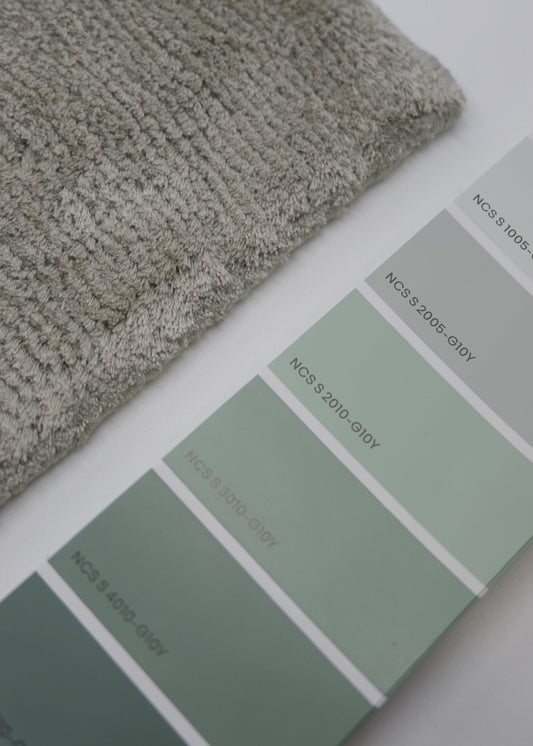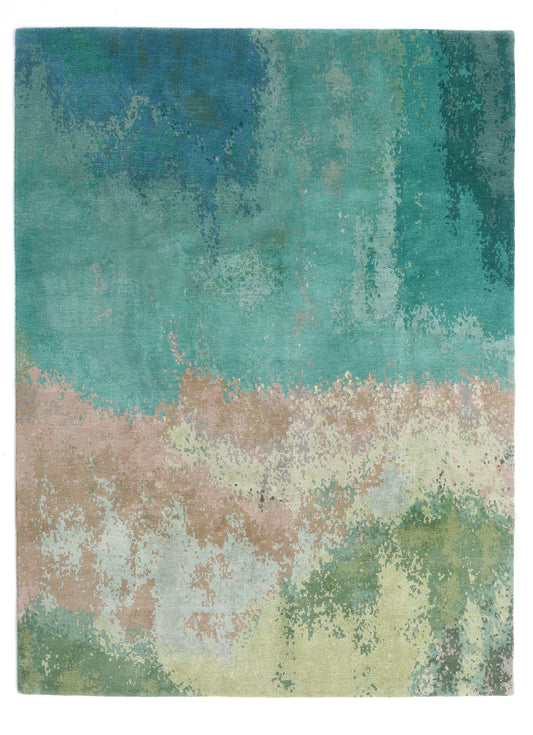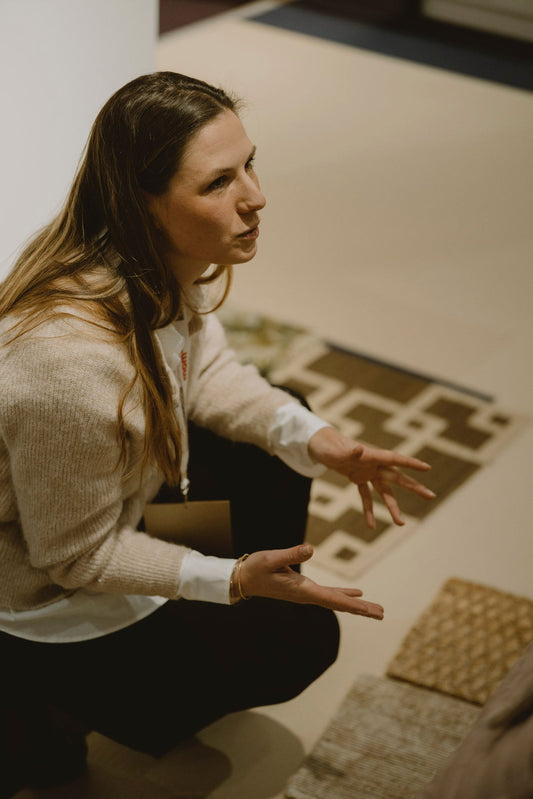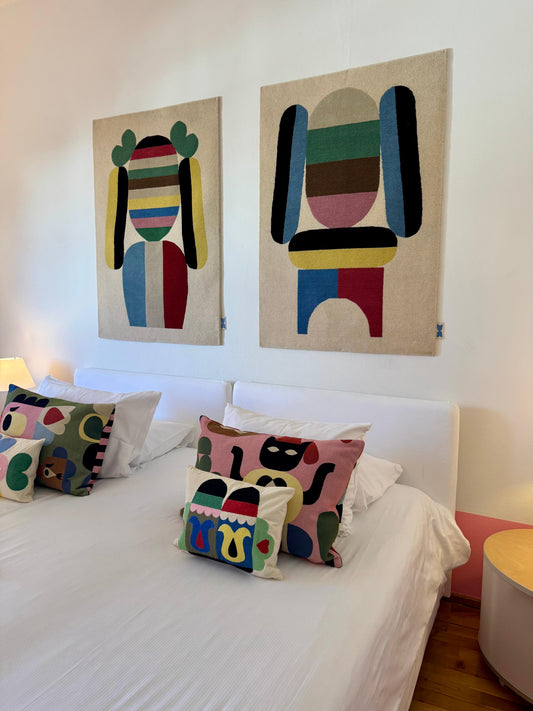color gradients from the Far East

The pattern of the Kimono carpet has its origins in the East Asian Pacific and is produced using a traditional process: the Ikat technique . In Japan, Ikat fabrics are still woven today to make high-quality kimonos. The name of the carpet comes from this context.
The yarn used for Ikat is only partially dyed by hand before weaving. It is wound onto rolls and the dye is applied across the yarn in uneven amounts. Different absorbency and changing tension conditions create color gradients that gently blend into one another. The typical, gently fading stripes then form during weaving.
Ikat is also used in the production of the Kimono carpet. Its pure new wool is dyed using the traditional Ikat technique, which creates the beautiful striped pattern when woven. The carpet is also certified with the "GoodWeave" seal . This guarantees the buyer that only adult and experienced craftsmen have made the carpet.
Brigitte magazine presents our Kimono carpet in the June 2015 issue and comments: "... if you want a handmade carpet that was not produced under exploitative conditions, you should look for the "GoodWeave" seal." (Source: Brigitte 14/2015)








